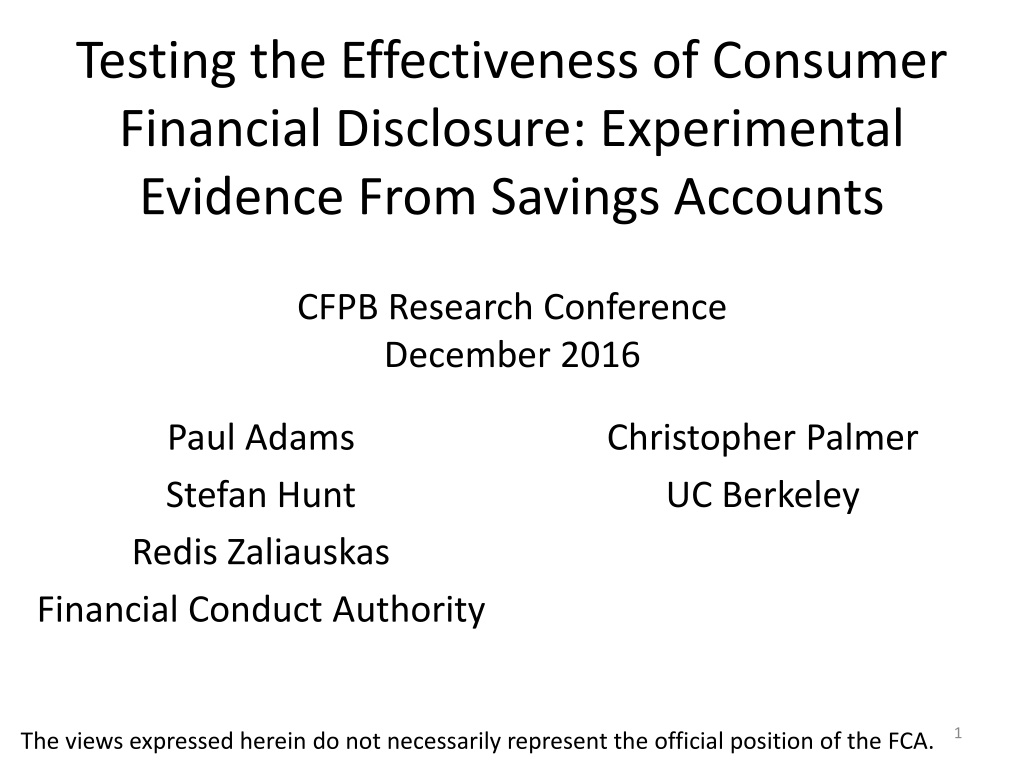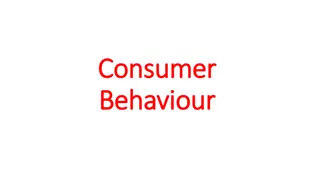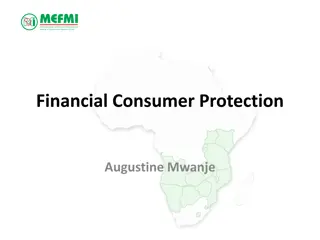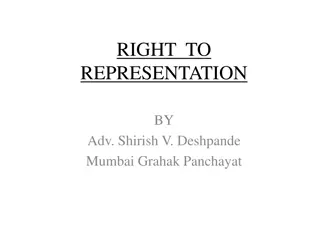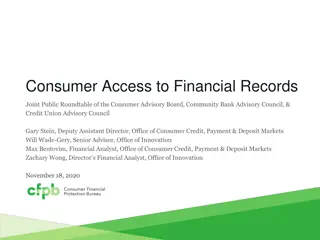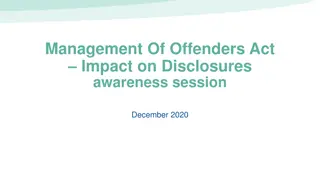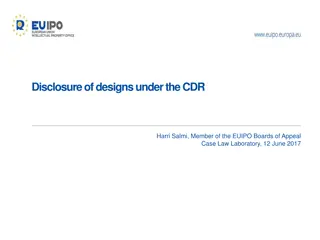Testing Effectiveness of Consumer Financial Disclosure: Experimental Evidence
This study explores the impact of consumer financial disclosure on savings accounts, investigating the importance of design and presentation. It questions whether optimized disclosures can enhance consumer outcomes and delves into the challenges posed by consumer inertia. The UK savings market background sheds light on the context of the research.
Download Presentation

Please find below an Image/Link to download the presentation.
The content on the website is provided AS IS for your information and personal use only. It may not be sold, licensed, or shared on other websites without obtaining consent from the author. Download presentation by click this link. If you encounter any issues during the download, it is possible that the publisher has removed the file from their server.
E N D
Presentation Transcript
Testing the Effectiveness of Consumer Financial Disclosure: Experimental Evidence From Savings Accounts CFPB Research Conference December 2016 Paul Adams Stefan Hunt Redis Zaliauskas Financial Conduct Authority Christopher Palmer UC Berkeley 1 The views expressed herein do not necessarily represent the official position of the FCA.
Motivation behind financial disclosure In theory, so long as consumers and firms are completely informed, the market gets it right (in the sense that there s no way to improve someone s position without making someone else worse off) But being completely informed is a myth: Goods and services are complex and costly to evaluate. Popular solution: policy often mandates disclosing information, firms often want liability indemnification. Surgeon general warnings, warranties, terms and conditions, truth-in-lending law disclosures, Unintended consequence: an abundance of fine print 2
Research Questions How much does the design/presentation of disclosure matter? Can optimized disclosure improve consumer outcomes? Or are there natural limits to the ability of consumer financial disclosure to protect consumers? 3
Why savings accounts are the ideal setting for testing these questions Problem of inferring effectiveness of disclosure: need to take a stand on what the right decision is. The Joint Hypothesis Problem in Asset Pricing One dimensional differentiation: interest rate Not entirely true: branch network, app quality, bank reputation, synergies across accounts: will address these Front-book/back-book pricing models 4
Disclosures uphill battle: consumer choice is sticky If consumers have ample options and information, we re generally not worried about firms delivering substandard goods and services because people will simply switch providers to one that meets their standards. But consumer inertia can get in the way Switching costs are any time or stress or hassle that consumers must incur to reoptimize their decisions. Long literature in economics, marketing, psychology Three flavors of switching costs: Uninformed lacking information about pros of switching Inertia have information but reluctant to switch because the process is too much of a pain given the size of the gains. Inattention not paying attention to issue one way or the other 5
UK Savings Market Background 1 Large and important market >$1 trillion 93% Interest rate % of balances 3.0% 80% not switched in last three years 60% 2 Same products sold for different prices 1.5% 30% 1.0% 0% <2 years 2-5 years >5 years Image result for benefits % clear benefits Image result for costs low switching cost control for brand preference 3 Simple environment 6
5 randomized controlled trials (RCTs) Sample Treatment arms Reverse page + survey 13,000 4 Switching box 63,000 + survey Front page 4 Return switching form 4,000 1 SMS reminder 30,000 4 Reminders Email and SMS reminder 24,000 2 >134,000 customers in total Median gain 32/year, average gain 127/year. 7
Return switching form Control: Treatment: 11
Email and SMS reminders Reference to best comparable account with the provider 13
RCT Design Five different providers each having different customer mix. Each randomized customers into treatment and control groups and delivered corresponding disclosures. Follow-up survey: Followed up a limited set of customers with survey. Strength: can compare results across providers to establish external validity Weakness: hard to compare treatment effects across providers given different customer mix 14
Data Rich administrative data on consumers Average age: 54 Has checking account with same provider: 55% Average account balance: 17,147 (median ~ 5k) Account age: 8.8 years Share using online banking: 47% Significant variation across providers 9-90% use online banking Average account 1-16 years old Average consumer age 42-64 6-97% with checking account at same provider 1k- 12k median balances 15
Outcomes: measuring effectiveness Product differentiation besides interest rates makes classification of wrong decisions problematic Motivates focus on internal switching: can take a strong stand Hard to rationalize preference to stay with dominated easy-access savings product at the same bank (apart from switching costs, information, inattention, and inertia) 16
Results: design matters but effects modest Percentage point increase in switching End of bonus No change 10% No change 5% Rate cut Rate cut 0% Reverse page switching box Front page switching box SMS reminder Email or SMS Switching form reminder -5% Control group: 7.6% 2.7% 6.2% 40.0% 3.0% 17
Email and SMS reminders impacted internal switching only Percentage point increase Email 8% SMS 6% 4% 2% 0% -2% All switching Internal Other 18
Return switching form induced only internal switching Control: switching box Percent of group Treatment: switching box + return switching form 15% 10% 5% 0% All switching Internal Other 19
Who responds best to disclosure? Perhaps the gains just aren t enough to care about => can restrict to large balances Perhaps I like my bank: have my checking account there, trust the brand, find the ATMs convenient. => can restrict to internal switching only. Other controls: age, gender, balance, number of products with same provider, account age, etc. 20
Lessons for Disclosure Design Burying the disclosure on last page: little effect Graphical depiction of disclosure: little effect Process improvements: facilitating internal switching had strongest effect Effects strongest when tied to a nearby salient event: impending/recent rate decrease 21
Survey results In the survey we measured: recall (interest rate, interest rate change, and communications received) intermediate actions of customers (shopping around, and the time it took) subjective evaluations (satisfaction with the individual decision taken) Consumers generally overestimate interest rates Many can t recall getting or noticing disclosure Most expected switching process to be more onerous than it turned out to be 22
Concerns Is there some optimal form of disclosure that does overcome switching costs/inattention? Inattention probably rational given the importance of average consumer disclosure. How to avoid alarm fatigue in consumer protection? Suspiciously off-equilibrium to have firm do this? Firms equilibrium response to disclosure Obfuscation Changing pricing models 23
Conclusion We tested targeted information disclosure and switching process simplification for a large sample of customers. Design matters, but even best designs have modest effects Even for people that have the option to easily switch to a better account with the same provider. Even for people with large balances and a lot to gain from switching. Little evidence regulators could mandate some magic optimal design that facilitates attentiveness and action. Faced with mandated disclosure, infinitely many ways for firms to blunt its effects Calling into question the policy reliance on disclosure. Regulators should consider using nudges and harder interventions in addition to or sometimes instead of disclosure. 24
